Entry Requirements for the United States
You’ve been planning the trip of a lifetime to the United States, and you can already taste the excitement in the air. Whether you’re dreaming of strolling through Central Park in New York City, hiking the majestic trails of Yosemite National Park, or simply savoring a classic American hot dog at a baseball game, the U.S. offers a world of adventures.
But here’s the kicker – before you can embark on your American dream, you need to navigate the sometimes bewildering maze of entry requirements. The thing is, these regulations have a habit of changing, evolving like a living, breathing entity. So, if you’re even thinking about crossing the U.S. border, you’ve got to stay in the know.
This article isn’t just about visas and forms; it’s about opening the door to your American adventure. So, grab your passport, fasten your seatbelt, and join us on a journey through the current entry requirements for the United States.
Visa Types
Before you start dreaming about the Statue of Liberty or the Grand Canyon, there’s a crucial first step when planning your American escapade: getting the right visa. It’s like finding the perfect key to unlock the door to your U.S. adventure.
B-2 Tourist Visa: This one’s your golden ticket for sightseeing, visiting family, or even getting some medical treatment stateside. We’ll delve deeper into the B-2 visa and what it entails.
B-1 Business Visa: If your plans involve a bit of business on the side – meetings, seminars, and all that jazz – the B-1 business visa is your jam. Let’s break down the nitty-gritty details and who qualifies for it.
F-1 Student Visa: If you’re thinking about diving into the world of American education, you’ll want to know about the F-1 student visa. This isn’t just a visa; it’s your pass to the land of academic opportunity. We’ll tell you how it works.
H-1B Work Visa: Got your sights set on a job in the U.S.? The H-1B work visa could be your ticket to the American dream. We’re here to give you the lowdown on how to snag one and what it means for your career.
So, there you have it – a sneak peek into the American visa smorgasbord. In the upcoming sections, we’ll dig deep into each of these visas, so you know exactly what you’re getting into before you pack your bags and head for the land of stars and stripes.
B-2 Tourist Visa

The B-2 Tourist Visa – your golden ticket to exploring the vast wonders of the United States. It’s the passport to a world of adventure, but before you can pack your bags and get ready to say “howdy” to America, you need to understand the nitty-gritty of this visa.
Unveiling the B-2 Visa
The B-2 tourist visa is your gateway to the U.S. for purposes of tourism, visiting family and friends, or even seeking medical treatment. It’s like the magic carpet that can transport you to the land of the free and the home of the brave.
The Voyage Begins
To embark on your journey with the B-2 visa, you’ll need to navigate the application process. It’s not as complex as a Rubik’s Cube, but it does have its own set of challenges.
Eligibility Check: First things first, you’ve got to ensure you meet the eligibility criteria. The U.S. government is pretty clear on this – you should be coming for a short, temporary visit, without any intention of working or studying during your stay. This is your chance to soak in the American experience, not punch in at a job.
Documentation Dance: Get ready to wade through paperwork. You’ll need to fill out the Form DS-160, the U.S. visa application form, and pay the required visa application fee. It’s a bit like doing your taxes but with a different set of forms.
Interview Time: Next up, you’ll schedule an interview at the nearest U.S. embassy or consulate. It’s your chance to show them you’re not a flight risk, and you genuinely plan to return home when your visa expires.
Financial Proof: Uncle Sam wants to know you can afford your stay. You might need to provide documents to prove you’ve got enough moolah to fund your adventure.
Purpose Presentation: Be ready to explain why you’re heading to the U.S. Whether it’s sightseeing, visiting your dear Aunt Mary, or seeking top-notch medical treatment, be clear about your intentions.
The B-2 Visa Blessing
Once you’ve successfully navigated this paperwork and proven your intentions, you’ll get the B-2 visa stamped in your passport. That’s your golden ticket to step onto U.S. soil.
But remember, the B-2 visa isn’t an open invitation to set up shop in the U.S. You’re expected to depart when your authorized stay ends. It’s a bit like Cinderella’s curfew – when the clock strikes midnight (or the end of your visa period), it’s time to head home.
So there you have it – the B-2 Tourist Visa, your passport to American adventures. Just remember, when you’re exploring the wonders of the U.S., to keep that visa close like your most treasured travel companion.
B-1 Business Visa
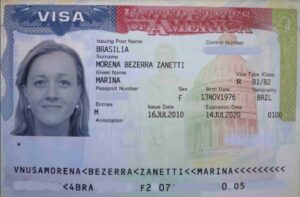
Got business on your mind? The B-1 Business Visa might just be your ticket to making deals, attending meetings, and all that corporate jazz in the United States. But before you start rehearsing your elevator pitch, let’s dive into what this visa is all about.
Unraveling the B-1 Visa
The B-1 business visa is your tool for conducting business in the U.S. without getting involved in full-fledged employment. Think of it as your backstage pass to the American business arena.
The Business Expedition
Getting your hands on the B-1 visa is your first business move. Here’s how it’s done:
Eligibility Exploration: Before you start filling out forms and booking flights, make sure you’re eligible. The B-1 visa is for folks who are visiting the U.S. for a specific business purpose – attending meetings, conferences, or negotiating contracts, to name a few.
Paperwork Party: Brace yourself for some paperwork – you’ll be filing Form DS-160, paying the visa application fee, and scheduling an interview at the nearest U.S. embassy or consulate.
Intent Presentation: During your interview, be prepared to explain the nature of your business activities and how they align with the B-1 visa’s purpose. This is your moment to shine.
Maximum Stay Mark: The B-1 visa comes with a maximum stay period, and it’s crucial to stick to it. You’re there to conduct business, not to set up shop.
Financial Fitness: Just like the B-2 visa, you might need to prove you’ve got the financial means to support yourself during your stay. Uncle Sam wants to know you won’t be begging for dollars on the streets.
The B-1 Visa Victory
If all goes well, and your intentions are clear as a crystal ball, you’ll get that coveted B-1 visa stamped in your passport. It’s your ticket to the world of business in the U.S., a chance to make connections, strike deals, and, who knows, maybe even seal the deal of a lifetime.
But remember, this visa isn’t a free pass to become an American employee. It’s a temporary ticket to take care of business, and you’re expected to return to your home base when your business tasks are done.
So, there you have it – the B-1 Business Visa, your backstage pass to the American corporate stage. Just like a well-rehearsed business plan, it’s all about making the right moves and ensuring a successful outcome.
F-1 Student Visa
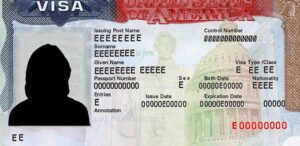
Welcome to the world of educational opportunities in the United States. The F-1 Student Visa is your golden ticket to explore the academic wonders of this diverse country, from the buzzing campuses of New York to the serene libraries of California. Let’s take a closer look at what this visa has in store for you.
The Academic Adventure
The F-1 Student Visa is your pathway to pursue academic dreams in the U.S. It’s like an invitation to join the global classroom, where you can learn, grow, and immerse yourself in the American education system.
Unlocking F-1 Visa Requirements
To open the door to this educational journey, you’ll need to meet certain requirements:
Acceptance by a U.S. School: First, you need to have an acceptance letter from a U.S. school or university. This is your ticket to the educational show.
Financial Support: Uncle Sam wants to know you can afford your studies and living expenses. You’ll need to prove you’ve got the financial resources to fund your education.
Non-Immigrant Intent: You’ve got to prove that you don’t have immigrant intent. In other words, you’re coming to study and not to become a permanent resident of the U.S.
SEVIS Fee Payment: Before applying for the F-1 visa, you’ll have to pay the Student and Exchange Visitor Information System (SEVIS) fee. Think of it as your backstage pass to the world of American academia.
Benefits Beyond Borders
Now, here’s the fun part. The F-1 Student Visa doesn’t just open doors to classrooms; it opens windows to a world of experiences.
Work Opportunities: While studying, you can work part-time on-campus, and once you’ve completed your degree, you can even participate in Optional Practical Training (OPT). It’s your chance to gain real-world experience in the U.S. job market.
Travel Perks: With an F-1 visa, you can travel in and out of the U.S. during your studies. So, during those breaks, you can explore America, from the bright lights of Times Square to the enchanting trails of the Grand Canyon.
Post-Graduate Prospects: The F-1 visa opens doors to Optional Practical Training (OPT), which means you can work for up to 12 months after completing your degree. It’s a launchpad for your career.
Read – World’s Most Amazing Flower Gardens
H-1B Work Visa
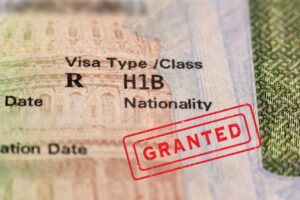
Are you a professional with skills that the U.S. job market is yearning for? The H-1B Work Visa might be your golden ticket to work in the land of opportunities. Let’s unravel the complexities of this visa and see how it can be your gateway to the American dream.
The H-1B Puzzle
The H-1B visa is like a puzzle piece that fits into the broader picture of the U.S. job market. It’s your opportunity to work in the U.S., making use of your specialized skills.
The H-1B Work Visa Web
Here’s the web of intricacies you’ll have to navigate to secure this visa:
Eligibility Expertise: To be eligible, you need to have a job offer from a U.S. employer. It’s not a case of “I’ll find a job when I get there.” You need to have that job in hand.
Specialized Skills: The H-1B visa is for individuals with specialized knowledge and skills, typically in fields like IT, engineering, healthcare, and more. You’ve got to bring something unique to the table.
Employment Terms: The employer needs to file a Labor Condition Application (LCA) with the U.S. Department of Labor. They should promise to pay you the same wages as they would for a U.S. worker in a similar role.
Cap Limit: There’s an annual cap on the number of H-1B visas issued, and they get filled quickly. It’s a bit like trying to grab the last slice of pizza at a party – you’ve got to be quick.
Three-Year Renewal: The H-1B visa is initially granted for three years, but it can be renewed for an additional three years, making it a total of six.
Work Wonders
The H-1B Work Visa is your ticket to the American job market. It’s a chance to gain valuable experience, work with cutting-edge technology, and build a stellar resume.
So, whether you’re aiming to fuel your academic aspirations or take your career to the next level, these visas are the keys to unlocking a world of opportunities in the United States. From classrooms to boardrooms, the U.S. is ready to welcome you.
Visa Waiver Program (VWP)
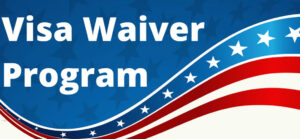
Let’s talk about a traveler’s best friend when it comes to visiting the United States – the Visa Waiver Program (VWP). It’s like your golden ticket to enter the U.S. without the hassle of a traditional visa. So, what’s the scoop on this program, and how can you benefit from it?
Unveiling the VWP
The Visa Waiver Program (VWP) is like a travel shortcut, making it easier for citizens of specific countries to enter the U.S. without the need for a traditional visa. It’s Uncle Sam’s way of rolling out the welcome mat for visitors from these chosen nations.
Who’s in the VWP Club?
The VWP is an exclusive club, and to see if you’re on the guest list, here’s a rundown of the countries that are part of this program:
- United Kingdom
- Germany
- France
- Italy
- Japan
- Australia
- Canada
- Andorra
- Austria
- Belgium
- Brunei
- Chile
- Czech Republic
- Denmark
- Estonia
- Finland
- Greece
- Hungary
- Iceland
- Ireland
- Latvia
- Liechtenstein
- Lithuania
- Luxembourg
- Malta
- Monaco
- Netherlands
- New Zealand
- Norway
- Poland
- Portugal
- San Marino
- Singapore
- Slovakia
- Slovenia
- South Korea
- Spain
- Sweden
- Switzerland
- Taiwan
Now, remember that the club can have some rules – you’re eligible for up to 90 days of travel. So, if you’re from one of these countries, it’s time to do a happy dance because you’ve got a ticket to explore the U.S. with ease.
The VWP Passport to the U.S.
But before you pack your bags and head to the airport, there are some entry requirements and conditions to be aware of when using the VWP:
Electronic System for Travel Authorization (ESTA): To enter the U.S. under the VWP, you’ll need to apply for an Electronic System for Travel Authorization (ESTA). It’s like the digital key to your American adventure. Apply for ESTA online, and once approved, it’s valid for multiple trips over two years.
90 Days Maximum: The VWP allows you to stay in the U.S. for up to 90 days for tourism, business, or transit purposes. So, make sure to plan your trip accordingly.
No Extensions: The 90-day clock starts ticking when you arrive, and it doesn’t stop. Extensions aren’t granted, so you’ve got to leave when your time’s up.
No Work or Study: Under the VWP, you can’t work or study in the U.S. If you’re thinking of hitting the books or taking up a job, you’ll need to explore other visa options.
Travel Within the VWP: You can enter the U.S. under the VWP, then travel to Canada, Mexico, and some Caribbean islands, and re-enter the U.S. with the same admission period. It’s like hopping from one neighbor’s house to another for a barbecue.
So, the Visa Waiver Program is like your express pass to exploring the U.S. without the fuss of a traditional visa. Just make sure you meet the entry requirements, and you’re ready to embark on your American adventure with ease. It’s time to pack your bags, apply for ESTA, and get ready for your U.S. journey!
ESTA Application Process
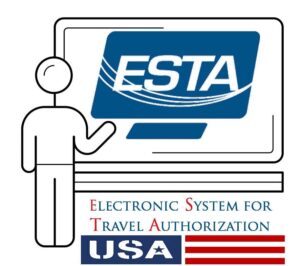
If you’re planning a trip to the United States and you’re from one of the Visa Waiver Program (VWP) countries, you’ll want to get cozy with the ESTA application process.
ESTA, short for Electronic System for Travel Authorization, is your digital pass to exploring the land of the free and the home of the brave. So, let’s break down how to get it done.
Step 1: Fire Up Your Internet Browser
The first thing you’ll need is a reliable internet connection. You’re going to do this all online, so make sure your Wi-Fi is up to the task. If you’re at a cozy café sipping on your morning latte, or you’ve got your pajamas on at home – it doesn’t matter. Wherever there’s internet, you’re in business.
Step 2: Visit the Official ESTA Website
Now, open your web browser and go to the official ESTA website. Don’t go wandering into the depths of the internet – stick to the official site. It’s like going to the source.
Step 3: Click on “Apply”
Once you’re on the website, look for the “Apply” button. It’s like the gateway to your American adventure.
Step 4: Fill Out the Application
This is where the magic happens. You’ll need to provide personal information, passport details, and your travel plans. It’s all pretty straightforward, but be sure to double-check everything. You don’t want to end up in New York when you meant to go to Los Angeles.
Step 5: Pay the ESTA Fee
Nothing in life is free, right? To get your ESTA, you’ll have to pay a fee. It’s like the admission price to a great theme park. Make sure you have your credit card handy, and follow the payment procedures. It’s as easy as buying your favorite book online. The overall expense amounts to $21. Upon submission of your application, there will be a $4 processing fee to be paid. If your application for travel to the U.S. is approved, an additional $17 authorization fee will be required.
Step 6: Check Your Email
Once you’ve completed the application and paid the fee, keep an eye on your email. You’ll receive an email with the outcome of your application. It’s like waiting for your college acceptance letter, except this one usually comes a lot quicker.
Step 7: Print Your ESTA
If your application is approved, don’t forget to print your ESTA. This is your golden ticket, so keep it safe. You might want to have a digital copy handy as well, just in case.
Read – Top 10 Things to Do in Macau That Aren’t Casinos
ESTA Eligibility
Now, before you go all in on your ESTA application, let’s make sure you’re eligible. We don’t want you to waste your time on something that’s not meant for you.
Citizens of VWP Countries: First things first, you need to be a citizen of one of the Visa Waiver Program countries. That’s your starting point. If you’ve got a passport from one of these nations, you’re on the right track.
Travel Intent: You’ve got to be clear about your travel intent. ESTA is for short visits to the U.S., for tourism, business, or transit. If you’re planning on staying for an extended period, working, or studying, you’ll need a different visa.
No Ineligibility Factors: Make sure you don’t have any disqualifying factors. This includes things like a previous visa denial or any medical or legal issues.
ESTA Application Fee
Alright, let’s talk money. Applying for ESTA comes with a cost. Currently, the fee is around $14. It’s like buying a couple of cups of coffee. It’s not a big expense, but it’s a necessary one. The payment procedures are easy, and you can use major credit cards.
So, if you’ve got the travel bug and you’re from a VWP country, it’s time to roll up your sleeves, get that ESTA application in, and start planning your U.S. adventure. It’s all just a few clicks away!
ESTA Validity and Renewal
Hey, travel enthusiasts! So, you’ve got your ESTA, and you’re all set to explore the United States. But there’s one thing you need to keep in mind – the validity of your Electronic System for Travel Authorization. Let’s talk about how long it’s good for and how you can renew it if you’re planning to make a return trip to the U.S.
How Long Is Your ESTA Valid?
The good news is, your ESTA is valid for two years from the date of approval. That’s like having a passport to the U.S. for a couple of years. During this period, you can make multiple trips to the U.S. as long as your stays don’t exceed 90 days each time.
Planning a Return Trip?
If you’re thinking of returning to the U.S. and your ESTA is still valid, you’re good to go. The process is straightforward. Just book your flight, pack your bags, and enjoy your American adventure. It’s like visiting an old friend – you already know what to expect, but there’s always something new to discover.
Renewing Your ESTA
Now, if your ESTA is about to expire or you’ve had a change in your passport details (like getting a new passport), you’ll need to renew your ESTA. Here’s how you can do it:
Visit the Official ESTA Website: Go back to the official ESTA website, and this time, instead of “Apply,” you’ll click on “Check Existing Application.” It’s like visiting your favorite restaurant again – you know the menu, and you’re ready to order.
Enter Your Information: You’ll need to provide some personal information, passport details, and your application number. It’s a bit like updating your profile on your favorite social media platform.
Check Your Status: After submitting your details, the system will let you know if your ESTA is still valid or if it’s time for a renewal. It’s like getting a green light at a traffic signal.
Renew Your ESTA: If you need to renew, the process is similar to the initial application. You’ll provide updated information, pay the fee, and you’ll be good to go for another two years.
So, whether you’re planning a return trip to the U.S. or you’ve had some changes in your passport details, renewing your ESTA is a breeze. Just keep track of that two-year validity period, and you’ll always be ready for your next American adventure. Safe travels!
Required Travel Documents
Before you pack your bags and head to the land of stars and stripes, there are a few essential travel documents you need to ensure smooth entry into the United States. Let’s break it down so you’re well-prepared for your American adventure.
1. Valid Passport
This one is an absolute must. Your passport is your golden ticket to international travel, and it needs to be valid for at least six months beyond your planned departure date from the U.S. Think of it as your trusty companion, making sure you can explore everything from the Big Apple to the Grand Canyon.
2. Visa (If Required)
Depending on your nationality and the purpose of your visit, you might need a visa to enter the U.S. Think of a visa as your invitation to the U.S. embassy’s grand party. Make sure to check the U.S. Department of State’s website to find out if your country falls under the Visa Waiver Program or if you need to apply for a specific visa type.
3. ESTA Authorization
Now, here’s the good news. If you’re from one of the Visa Waiver Program (VWP) countries, you can skip the visa application hassle and opt for the Electronic System for Travel Authorization (ESTA). It’s like a fast pass for entry into the U.S. Think of it as getting a stamp of approval for a memorable American adventure. Apply for ESTA online, and once approved, it’s valid for multiple trips over two years.
Arrival and Customs Process
You’ve just landed at a U.S. airport, and you’re excited to explore the land of opportunity. But before you dive into your American dream, there are a few things to consider when it comes to the arrival and customs process.
1. Immigration Inspection
The first step is going through immigration inspection. It’s like the gateway to your American adventure. You’ll need to present your passport and any required visas or ESTA authorization. The immigration officer might ask you a few questions about your trip, so be honest and straightforward.
2. Customs Procedures
Once you clear immigration, it’s time to tackle customs procedures. It’s where you declare any items you’re bringing into the country. Remember, certain items may be restricted or prohibited, so it’s essential to know what you can and can’t bring with you. It’s like having a checklist for a fantastic journey.
3. Welcome to the U.S.
After successfully passing through immigration and customs, you’re officially welcomed to the United States. It’s like crossing a threshold into a world of endless possibilities. Now, you’re ready to explore the bustling streets of New York, the beautiful landscapes of Yellowstone, or the sunny beaches of California.
So, as you plan your visit to the United States, make sure you have all the required travel documents in order. And when you arrive, go through the arrival and customs process with confidence. Your American adventure awaits, so make the most of it and create unforgettable memories!
Special Entry Situations
Traveling with Minors
If you’re planning to travel with minors (children under the age of 18), there are some additional considerations. Minors must have their passports and appropriate travel documents. If a minor is traveling with only one parent, it’s a good idea to carry a notarized consent letter from the absent parent. This helps prevent any potential complications during your journey.
Seeking Asylum
For individuals seeking asylum in the United States, the entry process is different. Asylum seekers are generally inspected by U.S. Customs and Border Protection. It’s essential to be aware of the legal requirements and procedures involved in seeking asylum. Consulting with an immigration attorney is often recommended to navigate this complex process.
Visiting for Medical Treatment
If you’re traveling to the United States for medical treatment, you’ll need to ensure you have all the necessary medical documentation. It’s advisable to consult with the medical facility you plan to visit and understand the requirements for obtaining a medical visa or entry under a different visa category. Your health should be a priority, so make sure you have all your medical records and documents in order.
Read Also – Four Types of Great Edinburgh Trips
Travel Tips and Resources
Plan Ahead
The key to a smooth entry into the United States is planning ahead. Make sure your passport is up-to-date and valid for at least six months beyond your intended departure date. Research the specific entry requirements for your country and visa type. Knowing what to expect can save you time and stress.
ESTA and US Visa Applications
For travelers from Visa Waiver Program (VWP) countries, the Electronic System for Travel Authorization (ESTA) is a convenient way to gain entry into the U.S. Make sure to apply for ESTA well in advance of your trip. For those requiring visas, start the application process early to allow for processing time. Remember, it’s better to be over-prepared than underprepared.
Official Government Resources
The U.S. government offers a wealth of resources for travelers. Visit the U.S. Department of State’s website for comprehensive information on entry requirements, visa applications, and travel tips. These resources are constantly updated, ensuring you have access to the most current information.
Conclusion
To wrap it all up, understanding the entry requirements for the United States is a crucial part of planning your trip. Whether you’re traveling with minors, seeking asylum, or coming for medical treatment, being informed is the first step. Plan ahead, apply for the right travel authorization or visa, and make use of official government resources.
We encourage you to explore the various visa options, ESTA authorization, and travel guidelines before packing your bags. Your American adventure awaits, and with the right knowledge, you’ll be ready for a journey full of unforgettable experiences. Safe travels!

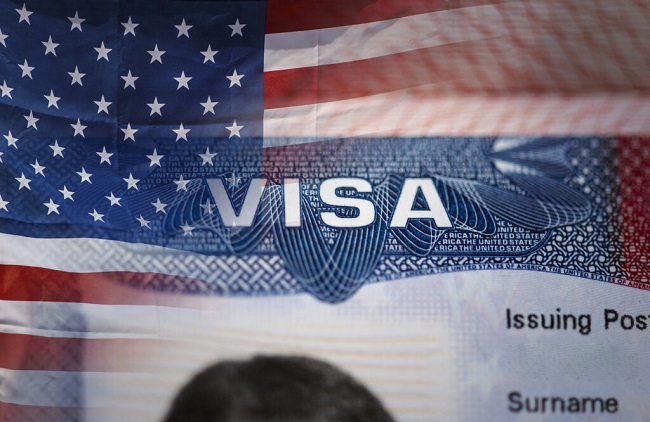



1 Comment
Visa Invitation Letter
November 28, 2024 at 5:50 pmThe clear breakdown of the different visa types and the ESTA program is especially helpful. Many people are unaware of the nuances of visa requirements, so this guide helps demystify the process.
I found the information on the ESTA program particularly useful. It’s a good reminder that U.S. travelers from Visa Waiver Program countries must apply for ESTA approval before traveling, and how failing to do so could lead to denied entry. The article also covers important topics like health and safety requirements, which are crucial to consider given the ongoing global health situation.
What really stands out to me is the advice about checking for updates on entry requirements before traveling. Immigration policies can change quickly, so staying informed is key to avoiding unexpected complications.
Overall, this post is a great resource for anyone planning to visit the U.S. It simplifies the complex process and provides all the necessary details for a smooth trip.